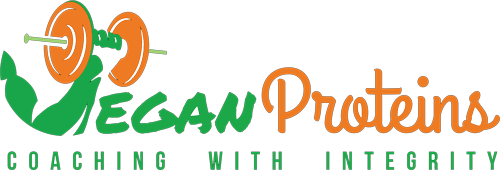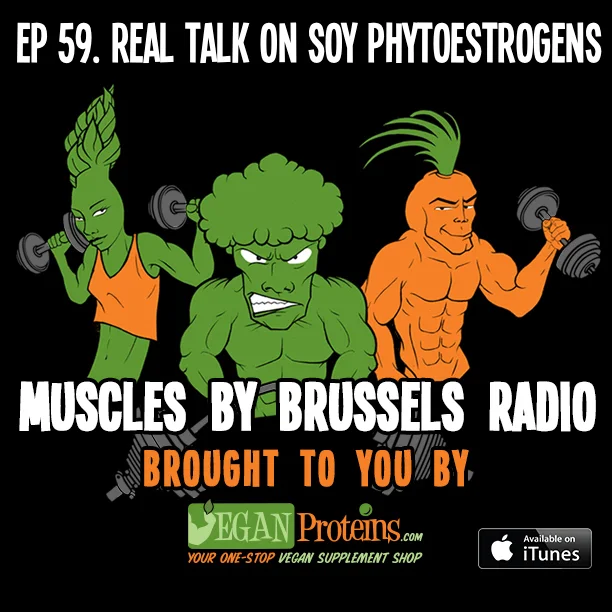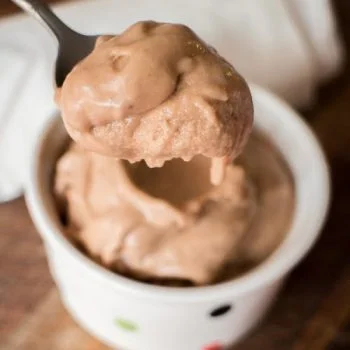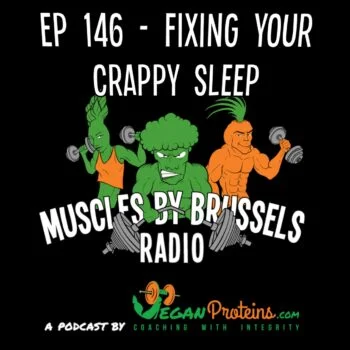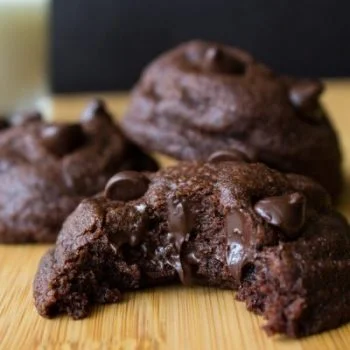To date, soy has remained a hot button topic, but why? In this episode, we break down walls and dissect the misinformation on what phytoestrogens found in soy are, and explain how they actually behave in the body.
Studies referenced in this episode:
1. Sirtori CR, Arnoldi A, Johnson SK. Phytoestrogens: end of a tale?Annals of medicine. 2005; 37(6):423–38. https://doi.org/10.1080/07853890510044586 PMid:16203615. [PubMed] [Google Scholar]
2. Cornwell T, Cohick W, Raskin I. Dietary phytoestrogens and health. Phytochemistry. 2004;65(8):995–1016. https://doi.org/10.1016/j.phytochem.2004.03.005 PMid:15110680. [PubMed] [Google Scholar]
3. Sirotkin AV, Harrath AH. Phytoestrogens and their effects. European journal of pharmacology. 2014;741:230–6. https://doi.org/10.1016/j.ejphar.2014.07.057 PMid:25160742. [PubMed] [Google Scholar]
4. Poluzzi E, Piccinni C, Raschi E, Rampa A, Recanatini M, De Ponti F. Phytoestrogens in postmenopause:the state of the art from a chemical, pharmacological and regulatory perspective. Current medicinal chemistry. 2014;21(4):417–36. https://doi.org/10.2174/09298673113206660297 PMid:24164197 PMCid:PMC3963458. [PMC free article] [PubMed] [Google Scholar]
5. Bedell S, Nachtigall M, Naftolin F. The pros and cons of plant estrogens for menopause. The Journal of steroid biochemistry and molecular biology. 2014;139:225–36. https://doi.org/10.1016/j.jsbmb.2012.12.004 PMid:23270754. [PubMed] [Google Scholar]
6. Rietjens IM, Sotoca AM, Vervoort J, Louisse J. Mechanisms underlying the dualistic mode of action of major soy isoflavones in relation to cell proliferation and cancer risks. Molecular nutrition &food research. 2013;57(1):100–13. https://doi.org/10.1002/mnfr.201200439 PMid:23175102. [PubMed] [Google Scholar]
7. Cassidy A, Brown JE, Hawdon A, Faughnan MS, King LJ, Millward J, et al. Factors affecting the bioavailability of soy isoflavones in humans after ingestion of physiologically relevant levels from different soy foods. The Journal of nutrition. 2006;136(1):45–51. https://doi.org/10.1093/jn/136.1.45 PMid:16365057. [PubMed] [Google Scholar]
8. Setchell KD, Brown NM, Lydeking-Olsen E. The clinical importance of the metabolite equol—a clue to the effectiveness of soy and its isoflavones. The Journal of nutrition. 2002;132(12):3577–84. https://doi.org/10.1093/jn/132.12.3577 PMid:12468591. [PubMed] [Google Scholar]
9. Vedrine N, Mathey J, Morand C, Brandolini M, Davicco M, Guy L, et al. One-month exposure to soy isoflavones did not induce the ability to produce equol in postmenopausal women. European journal of clinical nutrition. 2006;60(9):1039–45. https://doi.org/10.1038/sj.ejcn.1602415 PMid:16482068. [PubMed] [Google Scholar]
10. Paterni I, Granchi C, Katzenellenbogen JA, Minutolo F. Estrogen receptors alpha (ERα) and beta (ERβ):subtype-selective ligands and clinical potential. Steroids. 2014;90:13–29. https://doi.org/10.1016/j.steroids.2014.06.012 PMid:24971815 PMCid:PMC4192010. [PMC free article] [PubMed] [Google Scholar]
11. Cederroth CR, Zimmermann C, Nef S. Soy, phytoestrogens and their impact on reproductive health. Molecular and cellular endocrinology. 2012;355(2):192–200. https://doi.org/10.1016/j.mce.2011.05.049 PMid:22210487. [PubMed] [Google Scholar]
12. Jefferson WN, Williams CJ. Circulating levels of genistein in the neonate, apart from dose and route, predict future adverse female reproductive outcomes. Reproductive Toxicology. 2011;31(3):272–9. https://doi.org/10.1016/j.reprotox.2010.10.001 PMid:20955782 PMCid:PMC3192433. [PMC free article] [PubMed] [Google Scholar]
13. Teekachunhatean S, Natnita Mattawanon, Khunamornpong S. Short-Term Isoflavone Intervention in the Treatment of Severe Vasomotor Symptoms after Surgical Menopause:A Case Report and Literature Review. Case Reports in Obstetrics and Gynecology. 2015 https://doi.org/10.1155/2015/962740 PMid:26605099 PMCid:PMC4641951. [PMC free article] [PubMed] [Google Scholar]
14. Legette LL, Lee W-H, Martin BR, Story JA, Arabshahi A, Barnes S, et al. Menopause. 8. Vol. 18. New York, NY: 2011. Genistein, a phytoestrogen, improves total cholesterol and Synergy®, a prebiotic, improved calcium utilization but there were no synergistic effects; p. 923. https://doi.org/10.1097/gme.0b013e3182116e81 PMid:21659907 PMCid:PMC3181048. [PMC free article] [PubMed] [Google Scholar]
15. Anthony MS Phytoestrogens and Cardiovascular Disease. Am Heart Assoc;2002;Liu Z-m, Ho SC, Chen Y-m, Liu J, Woo J. Cardiovascular risks in relation to daidzein metabolizing phenotypes among Chinese postmenopausal women. Plos one. 2014;9(2):e87861. [PMC free article] [PubMed] [Google Scholar]
16. Nagamma T, Jagadeesh AT, Bhat KM. Effect of Phytoestrogens on Lipid Profile:Mini Review. Asian J Pharm Clin Res. 2017;10(2):50–3. https://doi.org/10.22159/ajpcr.2017.v10i2.15684 . [Google Scholar]
17. Ramdath DD, Padhi EM, Sarfaraz S, Renwick S, Duncan AM. Beyond the Cholesterol-Lowering Effect of Soy Protein:A Review of the Effects of Dietary Soy and Its Constituents on Risk Factors for Cardiovascular Disease. Nutrients. 2017;9(4):324. https://doi.org/10.3390/nu9040324 PMid:28338639 PMCid:PMC5409663. [PMC free article] [PubMed] [Google Scholar]
18. Reinwald S, Akabas SR, Weaver CM. Whole versus the piecemeal approach to evaluating soy. The Journal of nutrition. 2010;140(12):2335S–43S. https://doi.org/10.3945/jn.110.124925 PMid:20980652. [PubMed] [Google Scholar]
19. Allison DB, Gadbury G, Schwartz LG, Murugesan R, Kraker JL, Heshka S, et al. A novel soy-based meal replacement formula for weight loss among obese individuals:a randomized controlled clinical trial. European journal of clinical nutrition. 2003;57(4):514. https://doi.org/10.1038/sj.ejcn.1601587 PMid:12700612. [PubMed] [Google Scholar]
20. Tolba EA-EHT. Dietary phytoestrogens reduce the leptin level in ovariectomized female rats. Cellulose. 2013;1(1.10):0.17. [Google Scholar]
21. Kim S, Sohn I, Lee YS, Lee YS. Hepatic gene expression profiles are altered by genistein supplementation in mice with diet-induced obesity. The Journal of nutrition. 2005;135(1):33–41. https://doi.org/10.1093/jn/135.1.33 PMid:15623829. [PubMed] [Google Scholar]
22. Rietjens IM, Louisse J, Beekmann K. The potential health effects of dietary phytoestrogens. British journal of pharmacology. 2016 PMid:27723080 PMCid:PMC5429336. [PMC free article] [PubMed] [Google Scholar]
23. Jeng Y-J, Kochukov M, Nauduri D, Kaphalia BS, Watson CS. Subchronic exposure to phytoestrogens alone and in combination with diethylstilbestrol-pituitary tumor induction in Fischer 344 rats. Nutrition &metabolism. 2010;7(1):40. https://doi.org/10.1186/1743-7075-7-40 PMid:20459739 PMCid:PMC2881934. [PMC free article] [PubMed] [Google Scholar]
24. Liu J, Ho SC, Su Y-x, Chen W-q, Zhang C-x, Chen Y-m. Effect of long-term intervention of soy isoflavones on bone mineral density in women:a meta-analysis of randomized controlled trials. Bone. 2009;44(5):948–53. https://doi.org/10.1016/j.bone.2008.12.020 PMid:19168161. [PubMed] [Google Scholar]
25. Legette LL, Martin BR, Shahnazari M, Lee W-H, Helferich WG, Qian J, et al. Supplemental dietary racemic equol has modest benefits to bone but has mild uterotropic activity in ovariectomized rats. The Journal of nutrition. 2009;139(10):1908–13. https://doi.org/10.3945/jn.109.108225 PMid:19710157 PMCid:PMC2744611. [PMC free article] [PubMed] [Google Scholar]
26. Lai C-Y, Yang J-Y, Rayalam S, Della-Fera MA, Ambati S, Lewis RD, et al. Preventing bone loss and weight gain with combinations of vitamin D and phytochemicals. Journal of medicinal food. 2011;14(11):1352–62. https://doi.org/10.1089/jmf.2010.0232 PMid:21663481. [PubMed] [Google Scholar]
27. Ming LG, Chen KM, Xian CJ. Functions and action mechanisms of flavonoids genistein and icariin in regulating bone remodeling. Journal of cellular physiology. 2013;228(3):513–21. https://doi.org/10.1002/jcp.24158 PMid:22777826. [PubMed] [Google Scholar]
28. Soni M, Rahardjo TBW, Soekardi R, Sulistyowati Y, Lestariningsih Yesufu-Udechuku A, et al. Phytoestrogens and cognitive function:a review. Maturitas. 2014;77:209–20. https://doi.org/10.1016/j.maturitas.2013.12.010 PMid:24486046. [PubMed] [Google Scholar]
29. Thornton MJ. Estrogens and aging skin. Dermato-endocrinology. 2013;5(2):264–70. https://doi.org/10.4161/derm.23872 PMid:24194966 PMCid:PMC3772914. [PMC free article] [PubMed] [Google Scholar]
30. Accorsi-Neto A, Haidar M, Simões R, Simões M, Soares J, Jr, Baracat E. Effects of isoflavones on the skin of postmenopausal women:a pilot study. Clinics. 2009;64(6):505–10. https://doi.org/10.1590/S1807-59322009000600004 PMid:19578653 PMCid:PMC2705153. [PMC free article] [PubMed] [Google Scholar]
31. Chiang S-S, Pan T-M. Beneficial effects of phytoestrogens and their metabolites produced by intestinal microflora on bone health. Applied microbiology and biotechnology. 2013;97(4):1489–500. https://doi.org/10.1007/s00253-012-4675-y PMid:23318837. [PubMed] [Google Scholar]
32. Yellayi S, Zakroczymski M, Selvaraj V, Valli V, Ghanta V, Helferich W, et al. The phytoestrogen genistein suppresses cell-mediated immunity in mice. Journal of endocrinology. 2003;176(2):267–
35. https://www.ncbi.nlm.nih.gov/pmc/articles/PMC3249910/
PRODUCTS:
Flexible Dieting for Vegans E-Book
One Time Custom Macro Calculations
RESEARCH:
MASS (Monthly Application In Strength Sport). Signup here
MASS is one of our secret weapons and it continues to be an invaluable resource for us to keep up to date with the latest research. Don’t get swept up in fads or bogus info. Sign up and stay up to date with easy to consume journals and support the evidence-based fitness community.
